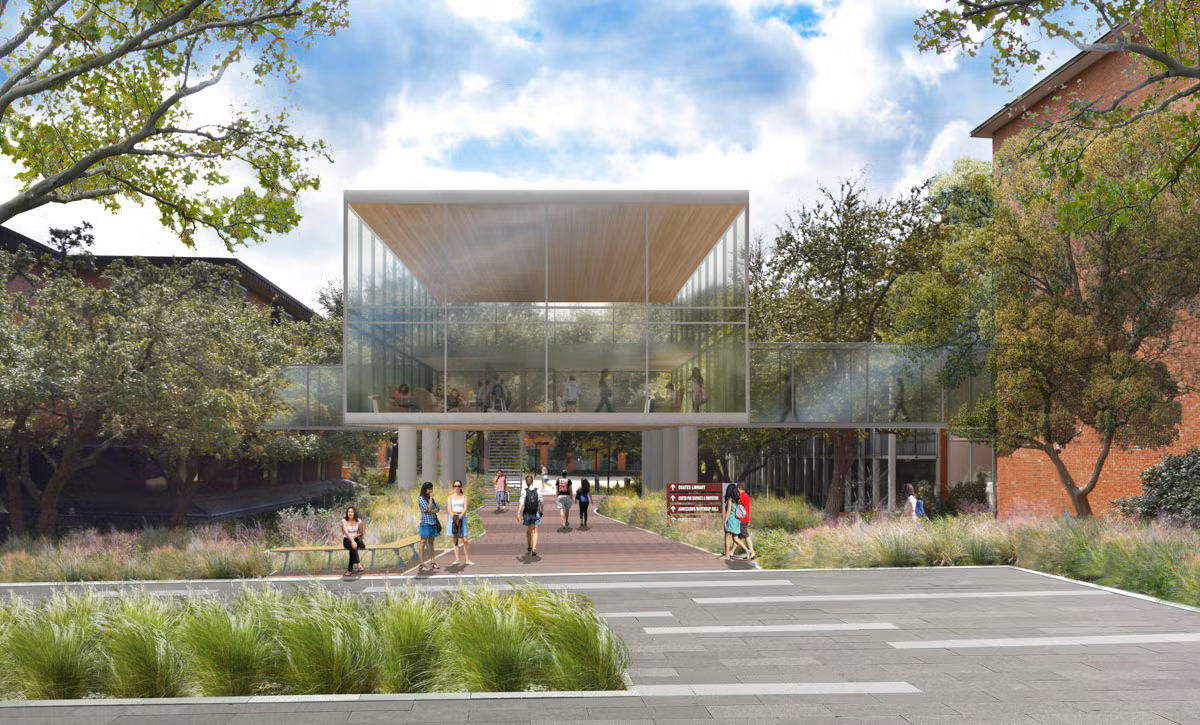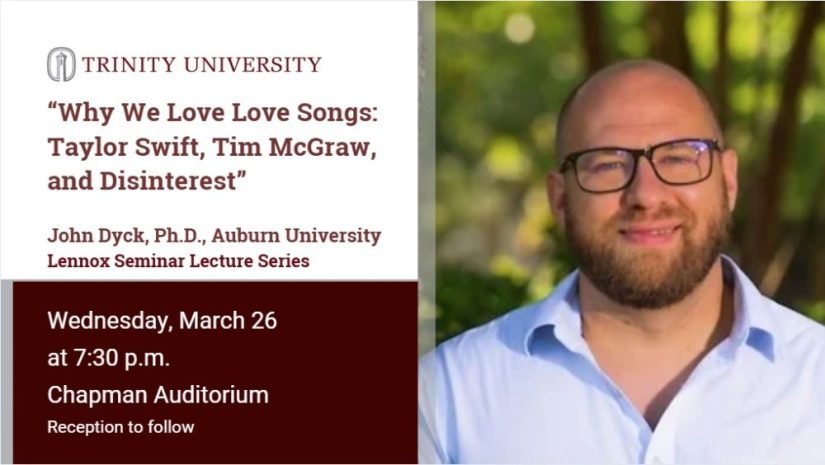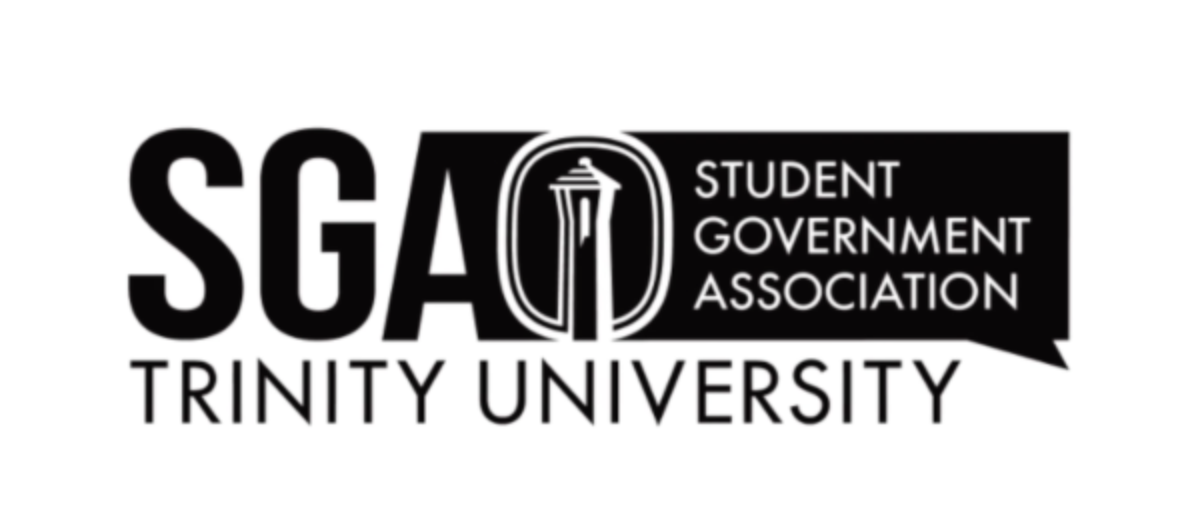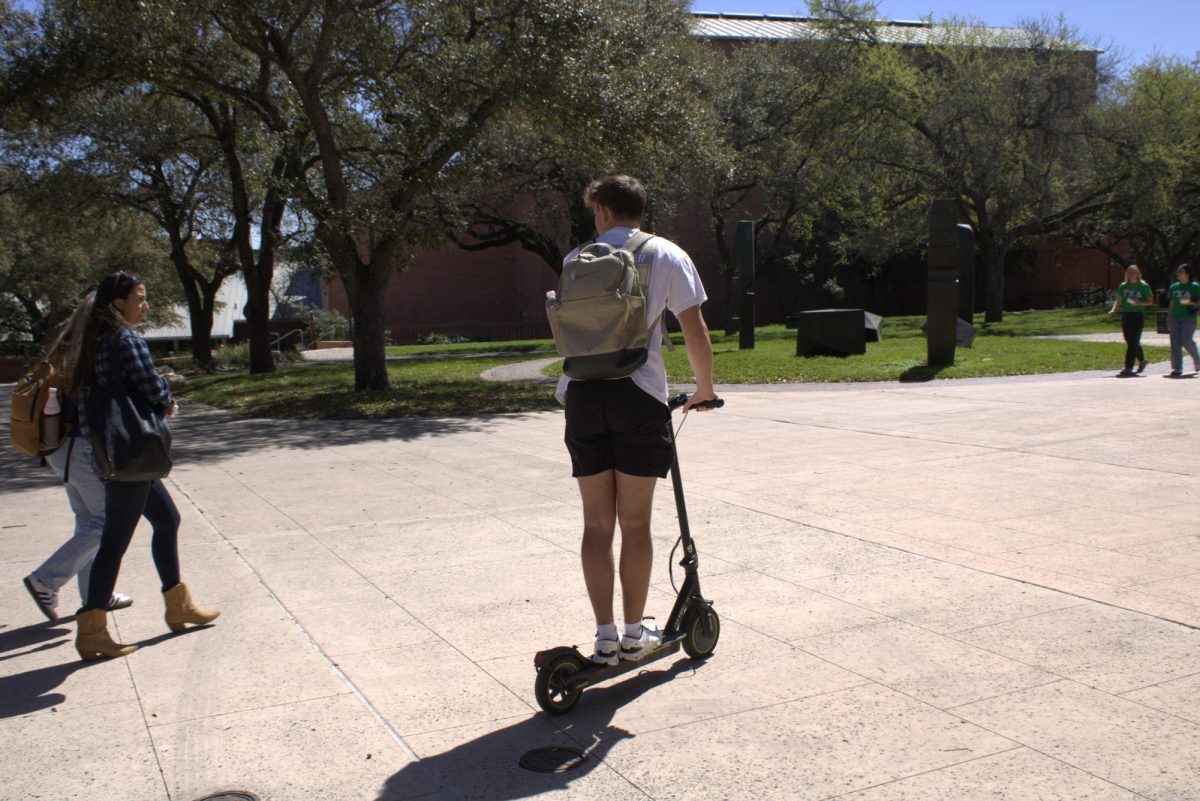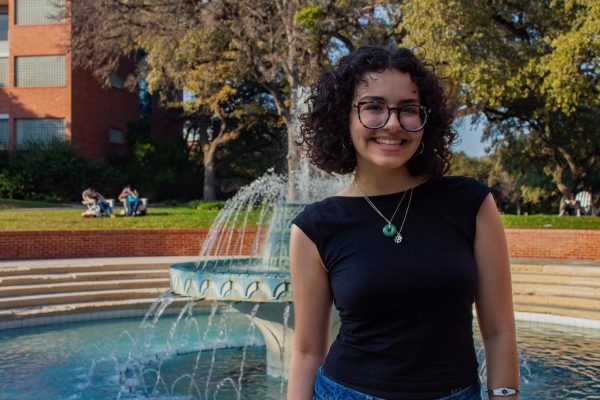As part of Trinity’s Master Plan to modernize the campus, Coates Library is set to undergo its first comprehensive renovation to update aging infrastructure, embrace new technologies and expand student-centered spaces. With a new Welcome Center bridge and third-floor updates planned to be completed by 2026, the library renovation seeks to reflect the evolving needs of Trinity’s campus community.
Spearheaded by collaborative input from students, faculty and staff, the project aims to preserve the library’s iconic mid-century design while reimagining its role as a modern, multifunctional space. In addition to these updates, the space will be reoriented to accommodate a connection to the new Welcome Center and a new link building.
Jeffrey Mischen, interim director of campus planning and project development, said the library renovation has been in the works for years. The plan includes ideas for a new café and Student Success Center within the library, as well as providing 24-hour access to the building.
“The library’s over 45 years old. A lot of the mechanical systems and electrical and plumbing are all original to the building, so we really need to address those,” Mischen said. “Over time, the library’s been chopped up here and there with different offices, different programming needs. It’s kind of become a bit of a maze, so now’s a good time to do a big overhaul project.”
A guiding feature of the project is the bridge connecting the library’s third floor to the new Welcome Center — a change that presents the opportunity to reorient the library’s layout. Additionally, there are plans to connect the Ewing Halsell and Chapman Centers to the third floor through a link building.
“That’s another reason why we really feel pressure to at least get that third floor looking better, because the admissions tour is going to be starting at the Welcome Center, going around campus and ending in the library through that main connection, that bridge to the Welcome Center,” Mischen said.
According to Mischen, students won’t see signs of renovations for a while, but when renovations start, it will be in phases to minimize disruptions. The Welcome Center and Coates third-floor updates are slated to be completed by 2026, and further renovations to the library will follow.
Benjamin Harris, dean of the library, said student input has been at the heart of the design process since it began last summer. The design team regularly hosts meetings and workshops and encourages its students to attend regularly.
“Sometimes renovation projects start years before students even know that they’re coming. The library is very different because this is a student space,” Harris said. “It’s really important that students know what’s going on and give feedback.”
Former professor Catherine O’Rourke’s architecture class played a key role in these early discussions. Students worked with faculty members, architects and campus facilities teams to gain firsthand insights into the renovation process.
“I worked closely with that class to give them information that would help them be able to develop real, actual proposals about what might happen during a renovation process,” Harris said. “The class was in the fall, right around the same time that the design process started. Dr. O’Rourke was on our working group during that semester … so they had really hands-on direct insight from all aspects of the project.”
Sebastien Najera, senior art and Spanish double-major, took the class last fall. Since then, he has continued to attend renovation workshops.
“One of the biggest things I remember speaking about in that class that I took was not changing too much,” Najera said. “I enjoy the library. I like that [it] feels very specific to when it was made. Our proposal was based on maintaining this current feeling, but then enhancing it.”
Mischen said the design team also believes maintaining the library’s character is crucial. Though the design team has major updates in mind, the iconic mid-century charm of the library won’t have to be sacrificed to realize their vision of a modern Coates.
“What is the modern library today? Libraries aren’t just books anymore. It’s a place to study, it’s a place for social gatherings, tutoring programs, continued education,” Mischen said. “The library wears a lot of different hats. So trying to define what the library is for the next 20 years, and what does that look like, has been a big focus of our project.”

